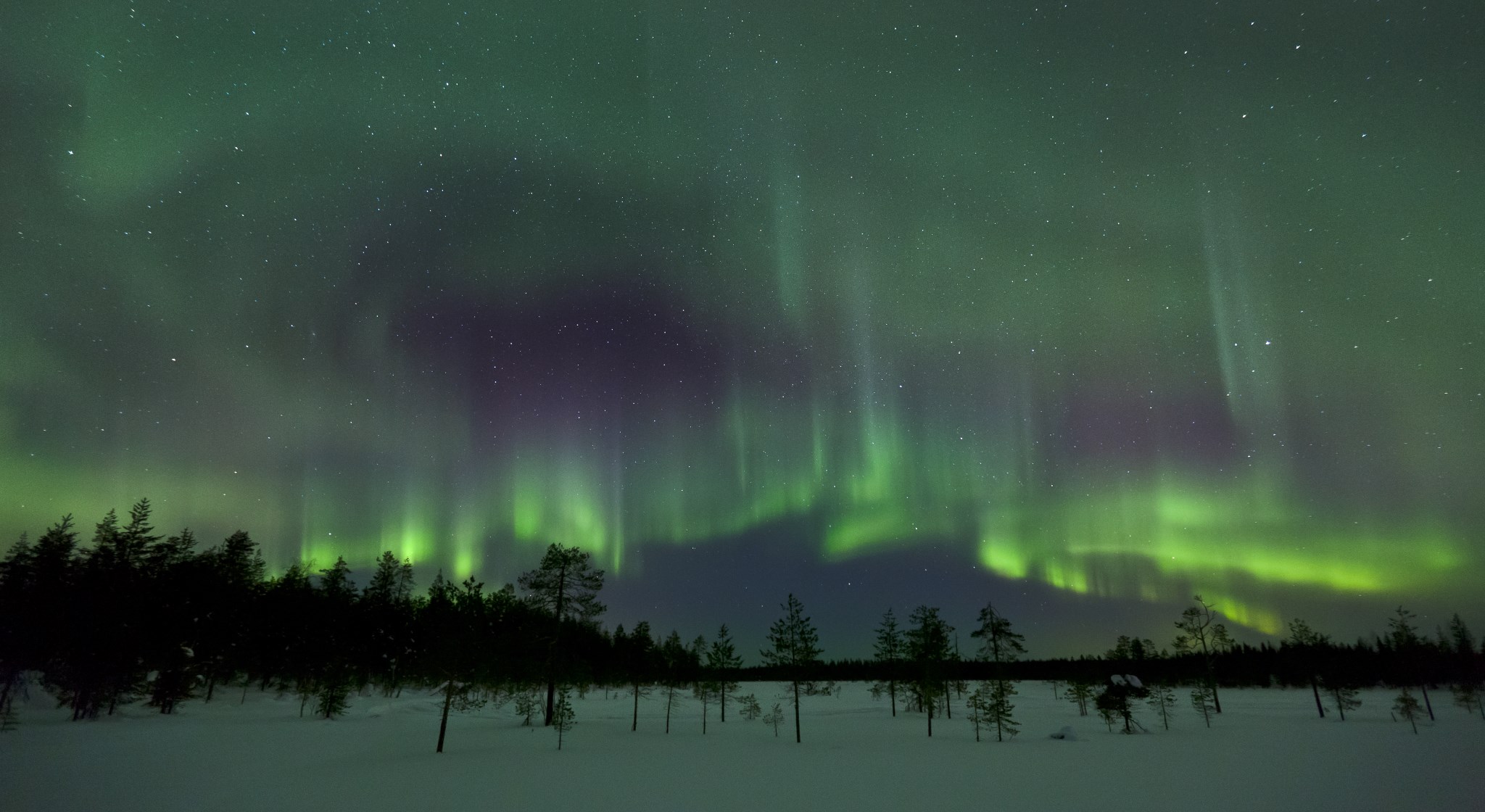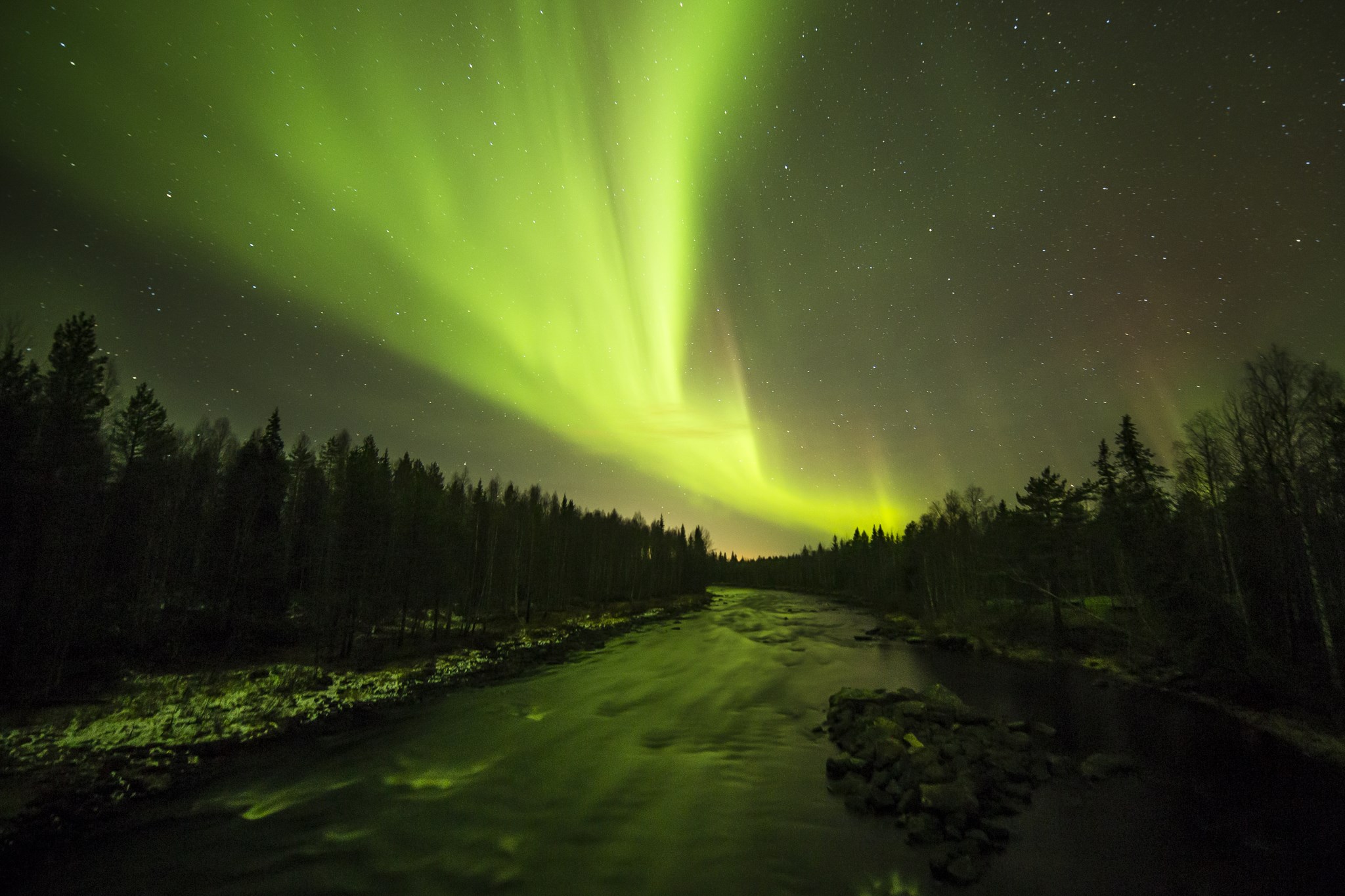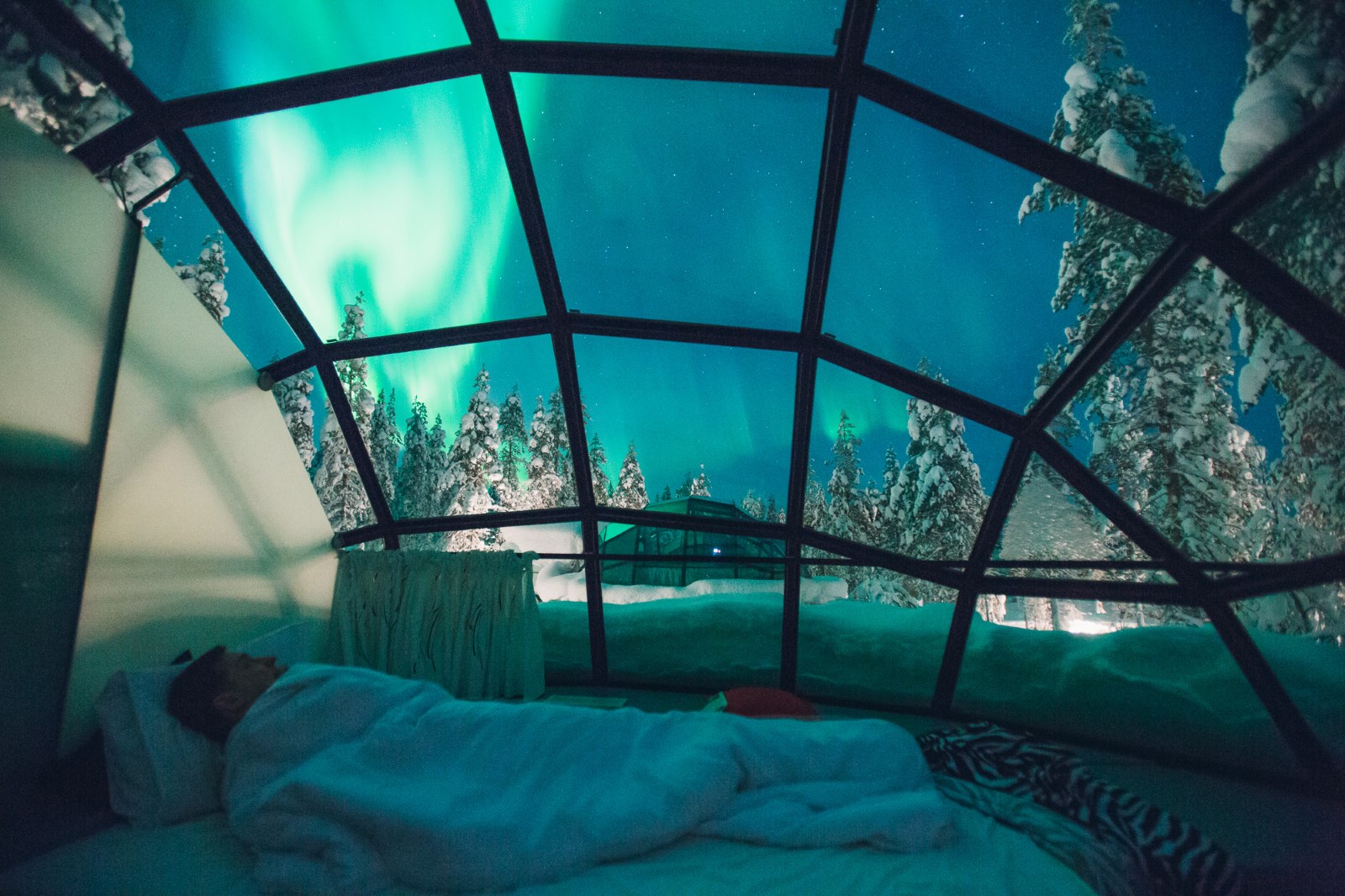Northern Lights (Aurora Borealis)
The Northern Lights (Aurora Borealis) is a spectacular phenomenon that occasionally lights up the night sky in the far north. Green, blue, red, violet along with many shades of these colors dance in the sky, forming new shapes and pulsating like a light show out of this world. Observing the lights is pure magic that everyone who has seen it will always remember. There is no photograph or video that can show how impressive the real thing is, but nonetheless, here a few images.

Photo copyright Visit Rovaniemi/Rovaniemi Tourism & Marketing Ltd.

Photo copyright Visit Rovaniemi/Rovaniemi Tourism & Marketing Ltd.
Northern lights are frequently visible north of the Arctic Circle. It is possible, but rather rare, to see the lights south of the Arctic Circle as well. In the far north, the lights show up regularly, and spotting them is easy if the following key criteria are met.
1. Season.
Autumn, winter and spring are the seasons for the Northern Light viewers. In summer, it is not dark enough - even in the middle of the night - to see the Northern Lights. The midnight sun sheds light through the night and prevents the human eye from spotting Aurora Borealis.
2. Weather.
Clear skies are required. If it is cloudy, you won’t be able to see the lights (unless, of course, you have a means of rising above clouds).
3. City lights.
Too much electric light around you may hide the Northern Lights. Even though there are not many towns north of the Arctic Circle, you should move away from the brightest lights to catch the full light show.
In the northern parts of Lapland, long term statistics indicate that the Northern Lights dance in the sky in three out of four nights. Yet, if you want to increase your odds in seeing the lights, you need up-to-date information on two things: the weather (for clear skies) and solar wind activity (when a strong burst is going to make contact with the earth's atmosphere).
You can find detailed weather forecasts for Nordic countries at national meteorological institutes’ web pages:
Sweden: www.smhi.se/vadret
Norway: www.yr.no
Finland: en.ilmatieteenlaitos.fi
Predicting the time when the Northern Lights will appear is an estimation derived from the sun's activity. The sun continuously emanates electrons and protons in space. The flow of these electrically charged particles is known as the solar wind. The wind correlates with bursts of sunspots. When a burst causesstrong enough solar winds, the particles arrive in earth's magnetosphere in one or two days. When it happens, the particles collide with gas in the earth's atmosphere. The collision turns on the colorful light show.
Northern Lights prediction service for Lapland: www.aurora-service.eu/aurora-forecast.
Viewing the Northern Lights
Viewing the light show is simple: look at the northern sky. When the Northern Lights are alive, the northern sky is the stage for the show. The colorful lights are easily visible to the naked eye, no instruments or aids are required. In order to maximize the area you can see, position yourself so that nothing blocks your view to the northern sky.
The lights are not harmful. They are pulsating at the height of 100 km/62 miles or higher above the earth. Only an extremely strong solar wind can cause disturbances to sensitive magnetic and electric devices.
You don't have to search for a particular place in order to view the Northern Lights. It doesn't make a difference if your viewpoint is at the top of a mountain, at the bottom of a valley, at the front porch of a cottage or at a car park. Especially in Lapland, ski resorts, hotels, and activity centers like to advertise how their place is the best for viewing the Northern Lights, but in reality, only the factors listed earlier matter.
There are hotels, like Kakslauttanen Arctic Resort in Finnish Lapland that has cottages with glass roofs. In a cottage like this, you don't have to go out at all, but you can sit on the couch (in the dark, naturally) and wait for the light show to begin. The resort's web page: kakslauttanen.fi.

Photo by Kakslauttanen Arctic Resort.
Applications and alert services for the Northern Lights
Nordic national meteorological institutions have a public alert system that can send email messages to subscribers when the Northern Lights are expected. Ski resorts, like Levi and Ylläs in Finnish Lapland have their own mobile applications that alert of lights.
Applications for Android phones and tablets:
Aurora Alerts Google Play
Northern Lights Alerts Google Play
For Apple mobile devices:
Aurora Forecast App Store
Northern Lights Alerts App Store
Other:
Alerts via Twitter twitter.com/Aurora_Alerts
Web page that shows the status in Lapland www.aurora-service.eu/aurora-forecast
If you are in Lapland but you fail to catch a live light show, some museums, like Arktikum in Rovaniemi feature a special wide screen show room that let you experience the Northern Lights.